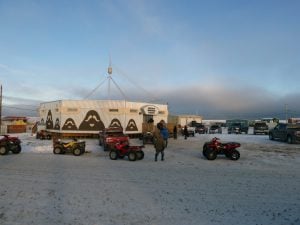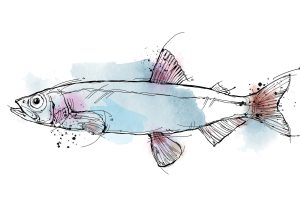
Travel
Exploring Newfoundland with Adventure Canada
Immerse yourself in Viking archaeology and Basque whaling history while taking in Newfoundland’s scenic coastline and incredible geology
- 1201 words
- 5 minutes
This article is over 5 years old and may contain outdated information.
History

This year marks the 100th anniversary of the Battle of the Somme—a sobering day in Newfoundland and Labrador’s history—when nearly the entire Newfoundland Regiment was wiped out on the battlefield of Beaumont-Hamel.
The battle took place on July 1, 1916 and the province has since observed this as Memorial Day.
To commemorate the centennial, The Rooms—a provincial museum, art gallery, and archives—is set to open a permanent gallery of the Royal Newfoundland Regiment. Below are some of the artifacts the gallery will have on display beginning July 1.
Sable Chief, Royal Newfoundland Regiment Mascot
Sable was the mascot of the Regiment’s training reserve, 2nd Battalion, in 1917, and was a gift from Canadian Captain C.W. Firebrace and Sir Edgar Bowring. Unfortunately, Sable was killed in a truck accident in 1919.

The Women’s Patriotic Association (WPA) pin
The WPA was comprised of more than 15,000 women who volunteered their time to support the Allied forces and to boost morale at home in Newfoundland. They raised over $500,000, made and shipped clothing overseas, and volunteered in local hospitals.

The Newfoundland Regiment crest badge
The Newfoundland Regiment was formed under the identity of the caribou, a symbol of bravery with its head held high. At the time of the War, Newfoundland hadn’t joined confederation and The Regiment was formed as part of the British Army.

Wheelchair of Lance Corporal Albert Chaffey, Royal Newfoundland Regiment #2337
During the War, Lance Corporal Albert Chaffey was sent home to Musgravetown, N.L., in this wheel chair after losing his leg to a gunshot wound. Soon after he abandoned the chair and resorted to crutches, and also had his Model A Ford modified so he could drive it.

Bag of Sergeant Anthony James (Jim) Stacey, Newfoundland Regiment #466
This German bag was used by Jim Stacey, a battalion messenger who ran messages between officers and headquarters at Beaumont-Hamel. He carried orders to advance into No Man’s Land on July 1, 1916, possibly in this very bag.

Trail of the Caribou Stamps
These stamps were issued by the Newfoundland government after the War to commemorate the Regiment and Royal Naval Reserve, and to help raise funds for veterans and their families.

Are you passionate about Canadian geography?
You can support Canadian Geographic in 3 ways:

This story is from the July/August 2016 Issue

Travel
Immerse yourself in Viking archaeology and Basque whaling history while taking in Newfoundland’s scenic coastline and incredible geology

History
All school-aged children in Norway learn his name.And thanks to the recent repatriation of a handful of Nattilik Inuit artifacts he collected in the early 1900s, perhaps…

Wildlife
Writer Stephen Smith takes to Newfoundland’s shores in his quest to see the ‘capelin roll’ — the spawning spectacle of a tiny fish with a massive ecological, historical and cultural impact

People & Culture
The Society’s headquarters at 50 Sussex Drive played host to HRH on the second day of his Platinum Jubilee tour of Canada